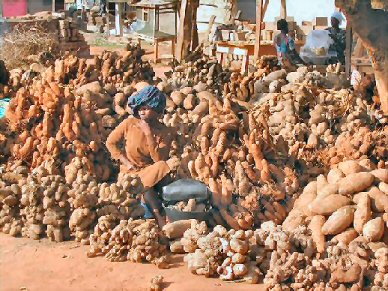
Yam (Dioscorea species) has its centre of origin in West Africa where 90% of world production currently occurs. In West Africa yam is steeped in cultural history and revered as a cultural symbol of fertility, for example it is an essential element of marriages in many cultures. However, due to declining land availability, reduced fallow systems, and pests and diseases, yam yields are decreasing. This production decline is also attributed to poor quality and availability of seed yam (which are small pieces of yam used to grow full size yams). Work currently underway, has highlighted the extreme nature of the problem in some areas, with a scarcity of seed material and devastating levels of disease infestation on available seed material. Some of the most highly prized varieties also appear to be amongst those in shortest supply and most diseased and therefore most at risk of possible permanent loss. Intervention to prevent such losses of important germplasm is required. Research currently being carried out by the Diocesan Development Service, the Natural Resources Institute and the International Institute of Tropical Agriculture, is aimed at developing a system for the promotion of healthy seed yam and consequently the conservation of important germplasm, improving yam production and conserving the environment. Improved yields require less land and therefore reduce the need for forest and bush fallow clearance, which is necessary for the nutrient demanding yams.
Project R8278: Evaluation and promotion of crop protection practices for 'clean' seed yam production systems in central Nigeria
Project leader: Lawrence Kenyon, Natural Resources Institute, University of Greenwich

